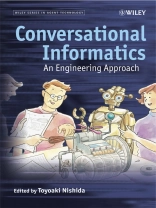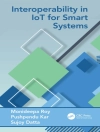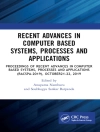Conversational informatics investigates human behaviour with a view to designing conversational artifacts capable of interacting with humans in a conversational fashion. It spans a broad array of topics including linguistics, psychology and human-computer interaction. Until recently research in such areas has been carried out in isolation, with no attempt made to connect the various disciplines. Advancements in science and technology have changed this.
Conversational Informatics provides an interdisciplinary introduction to conversational informatics and places emphasis upon the integration of scientific approaches to achieve engineering goals and to advance further understanding of conversation.
It features a collection of surveys structured around four prominent research areas: conversational artifacts, conversational contents, conversation environment design and conversation measurement, analysis and modelling.
* Conversational artifacts shows how synthetic characters or intelligent robots use eye gaze, gestures and other non-verbal communicators to interact.
* Conversational contents looks at developing techniques for acquiring, editing, distributing and utilising the contents that are produced and consumed in conversation.
* Conversation environment design explains techniques for creating intelligent virtual environments and for representing individuals within a virtual environment by monitoring and reproducing their non-verbal conversational behaviour.
* Conversation measurement, analysis and modelling demonstrate how conversational behaviour can be measured and analyzed.
Conversational Informatics will be an invaluable resource for postgraduate students and researchers in Computer Science and Electrical Engineering as well as engineers and developers working in the field of automation, robotics and agents technology.
लेखक के बारे में
Toyoaki Nishida is Professor, Department of Intelligence Science and Technology, Graduate School of Informatics, Kyoto University. His research centers on artificial intelligence and human computer interaction.?He leads several projects, including a Japan Society for the Promotion of Science project on intelligent media technology for supporting natural communication between people, and The Research Institute of Science and Technology for Society project on conversational knowledge process for risk communication.?He is editorial board member of publications including New Generation Computing, Autonomous Agents and Multiagent Systems, Knowledge and Information Systems, Web Intelligence and Agent Systems, and Springer Series on Advanced Information and Knowledge Processing.?He is a founder of a series of international workshops on social intelligence design, originating in JSAI-Synsophy International Workshop on Social Intelligence Design (SID2001), May 2001.












